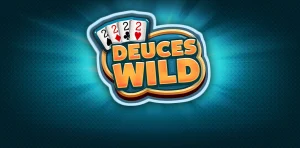You’ve got your cards. A decent hand, maybe. But in rummy, the cards are only half the story. The real game—the thrilling, gut-wrenching, and utterly fascinating part—unfolds in the silent spaces between turns. It’s a dance of deduction, a high-stakes performance where you’re both the actor and the audience. Let’s dive into the hidden psychology of bluffing and reading your opponents.
Bluffing: It’s Not Just for Poker Players
Honestly, many people think bluffing is a poker thing. But in rummy? It’s a subtle art. A well-timed bluff can force a skilled opponent into a costly mistake, giving you that crucial edge. You’re not just playing your cards; you’re playing the person.
The Anatomy of a Rummy Bluff
So, what does a bluff actually look like here? It’s rarely about a giant, dramatic lie. It’s in the micro-decisions.
- The Confident Discard: Picking up from the open pile and then immediately discarding a card that seems useless. This screams, “I don’t need this; my sequences are already set!” Even if, you know, they’re not.
- Holding onto “Bait”: Keeping a seemingly dangerous card (a loose 5 of Hearts when hearts are in play) for a long time. This makes opponents second-guess their own plans, thinking you’re building a run they can’t see.
- The Speed of Play: Acting quickly when you have a poor hand projects confidence. Hesitating only when you have a genuinely tough choice can mask your true strength.
Why Your Brain Loves to Bluff (And Why It’s Risky)
Bluffing taps into a powerful psychological principle: the desire for control. When your hand is weak, bluffing makes you feel proactive, not passive. It’s a psychological counter-punch. That said, the risk is real. An observant player will see through a poorly executed act. You can’t bluff every hand. It’s a spice, not the main ingredient.
Reading Your Opponents: The Unspoken Language of the Game
If bluffing is about what you project, reading opponents is about what you absorb. This is where you become a human lie detector. You’re looking for patterns, for cracks in the facade.
Tells: More Than Just a Twitch
We all have them. Those little, almost imperceptible habits that betray our inner state. In online rummy, they’re just different.
| Physical Tells (Offline Play) | Digital Tells (Online Play) |
| A slight lean forward when waiting for a specific card. | The speed of a discard after drawing from the closed deck. |
| Re-arranging cards frantically versus calmly. | Consistently hovering the mouse over a particular suit or rank. |
| A change in breathing pattern or a subtle sigh. | Using the “Sort” button repeatedly—often a sign of a chaotic, unorganized hand. |
Decoding the Discard Pile
The discard pile is a goldmine of psychological information. It’s a storybook of your opponents’ fears and strategies.
For instance, if a player avoids discarding any cards from 5 through 9, they’re likely holding a wide range of possibilities, trying to keep their options open. It’s a sign of an adaptable, but perhaps indecisive, strategy. Conversely, someone who quickly throws out high-value face cards is probably chasing a pure sequence aggressively, signaling a “go big or go home” mindset.
The Mental Chess Match: Advanced Psychological Warfare
Okay, so you know the basics. But the masters play a deeper game. They think two, three steps ahead.
Pattern Recognition and Misdirection
Humans are pattern-making machines. It’s how we’re wired. A smart player will establish a pattern early on—like always discarding the highest ungrouped card—only to break it at a critical moment. This misdirection can be devastating. Your opponent thinks they have you figured out, and then… you change the script.
Emotional Control is Your Superpower
This might be the most important part. Frustration, excitement, panic—these emotions are like a neon sign advertising your hand. The player who maintains a “poker face,” or in online terms, a consistent tempo of play regardless of their hand’s quality, becomes incredibly difficult to read. They create a psychological shield. When you feel a surge of anger after a bad draw, that’s the exact moment to take a breath and act as if nothing happened. Easier said than done, sure. But it’s what separates good players from great ones.
Putting It All Together: A Practical Mindset
So how do you actually practice this? You can’t just decide to be a mind reader. Well, you start by shifting your focus.
- Observe First, Act Second: Spend the first few rounds of a game just watching. Don’t just think about your own melds. Track what others are picking and discarding. Build a mental profile for each opponent.
- Vary Your Own Patterns: Be consciously unpredictable. Sometimes play fast, sometimes slow. Don’t always discard the obvious card. Make yourself a hard puzzle to solve.
- Embrace the Meta-Game: The “meta-game” is the game outside the game—the shared understanding of common strategies. If everyone expects you to bluff in a certain situation, sometimes the most powerful move is to play it straight. It’s all about context.
The Final Card on the Table
At its heart, competitive rummy is a beautiful, complex conversation. One spoken not with words, but with discards, picks, and pauses. The psychology isn’t a cheat code; it’s the lens that brings the true game into focus. It’s the understanding that every move you make is a sentence in a story your opponents are desperately trying to read. And the best part? You get to write the ending.




